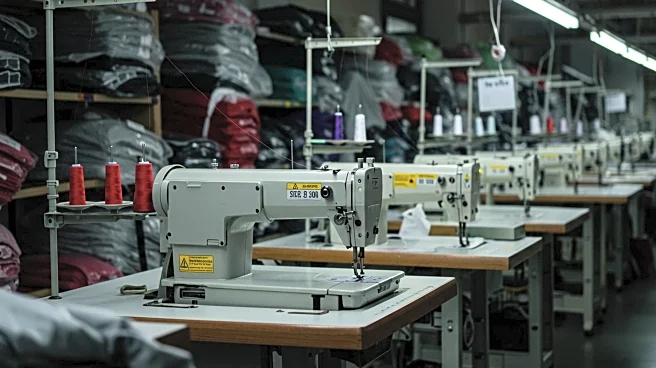What's Happening?
Since the Rana Plaza tragedy in 2013, the number of trade unions in Bangladesh's garment sector has increased significantly, from 250 to nearly 1,300. Despite this growth, many unions struggle to protect workers' rights effectively. Approximately 70% of garment factories lack registered trade unions, relying instead on participation committees. The labor law has been amended to facilitate union formation, but challenges persist due to factory pressure and inefficiencies within unions. Union leaders cite issues such as bias towards factory owners and lack of bargaining power as major obstacles.
Why It's Important?
The surge in trade unions reflects international pressure for improved labor conditions following the Rana Plaza disaster. However, the continued lack of effective worker protection highlights systemic issues within the garment industry, which is a major contributor to Bangladesh's economy. The inefficacy of unions affects workers' ability to negotiate for better wages and conditions, impacting their livelihoods and safety. This situation underscores the need for stronger labor laws and enforcement mechanisms to ensure workers' rights are upheld.
What's Next?
Union leaders are calling for further amendments to labor laws to enhance union functionality and bargaining power. The government may face increased pressure from international stakeholders to improve labor conditions and ensure compliance with global standards. The ongoing challenges in union effectiveness could lead to more advocacy and activism from workers and labor rights organizations, potentially influencing policy changes.
Beyond the Headlines
The struggle for effective union representation in Bangladesh's garment sector highlights broader issues of labor rights in developing countries. The reliance on international pressure to drive change raises questions about sovereignty and the role of global organizations in domestic affairs. The situation also reflects the complexities of balancing economic growth with ethical labor practices, a challenge faced by many countries with large manufacturing industries.











